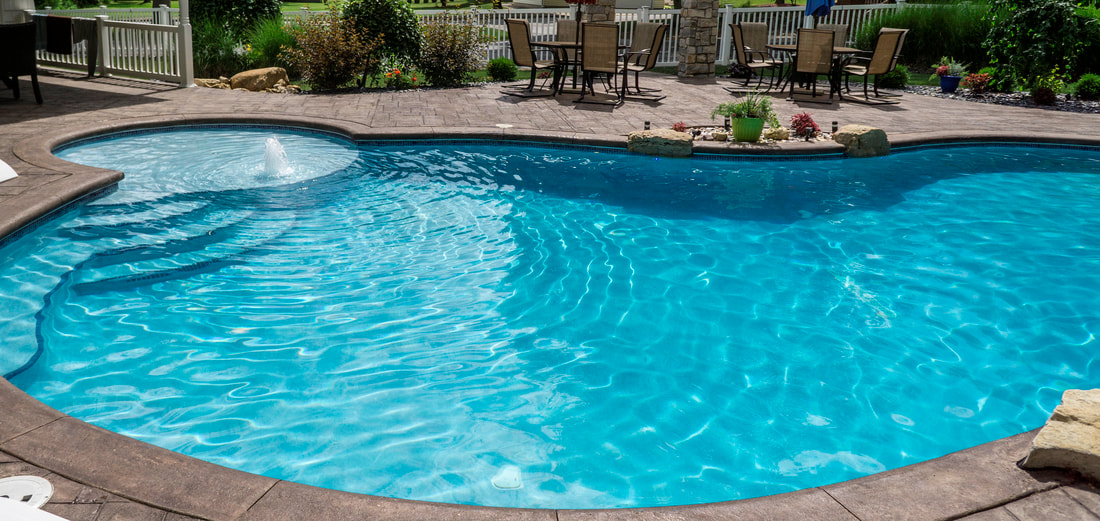|
Concrete swimming pools are the oldest most reliable and durable swimming pool you can invest in, and they come with an abundant array of personal customizations and options. One of the many aesthetic options is the pool finish. Pool finishes come in a variety of material, color, and texture associated with different costs and benefits. The oldest and one of the most popular pool finishes is the classic white plaster finish. Classic white plaster is made up of white cement crush marble powder and water. When the pool is filled with water, this beautiful finish reflects a clean light blue and is very smooth to the touch. Classic white is also the least costly compared to other finishes. Some concerns of traditional white plaster finishes are that it is more susceptible to chemical attacks from improperly balanced pool water which can lead to etching, stains, and spotting when compared to more modern pool finishes. Additives such as color and chemical resistance can be added to classic white giving the homeowner more options. Some concerns when using additives is the inconsistency of color and spotting. It is imperative that you hire a professional with experience and that the homeowner or service tech correctly maintains the pool chemistry. Other more modern pool finishes have quartz, glass, or pebble aggregates that replace the white sand or crushed marble powder. Aggregate finishes can be applied to a relatively smooth finish with some natural feeling texture. Aggregate finishes with minimal exposure effort can look great and over time by natural aging and proper maintenance the finish can start to transform look and feel exposing beautifully smooth aggregates slowly. For more immediate aggregate revelation there are options to have your aggregate pool finish either polished or chemically exposed. After the aggregate pool finish is applied and partially cured, the contractor can polish the finished surface with a wet grinder/polisher with various diamond grit polishing pads. This physically removes a thin layer (microns) of plaster paste exposing the aggregate. Chemically exposing aggregates requires using a ratio of muriatic acid and water. The acid mix is poured and spread onto the finish while being brushed and washed with water chemically removing (microns) of plaster paste. Aggregate finishes are more resistant to chemical attacks because of its natural material, and they are less porous by nature making this finish option more desirable. Of course, no finish is fool proof, and by maintaining and balancing your pool water, this will ensure a beautiful finish that will last a very long time.
1 Comment
1/12/2021 04:26:32 am
I find it amazing how pools could come in a variety of finishes, such as using aggregates that can give you that natural look. My aunt wants to make her pool more welcoming towards our relatives that plan to visit next week. I'll share this with her so she could have a pool resurfacing expert to look after her pool.
Reply
Your comment will be posted after it is approved.
Leave a Reply. |
Archives
September 2020
Pool & Spa |


 RSS Feed
RSS Feed


